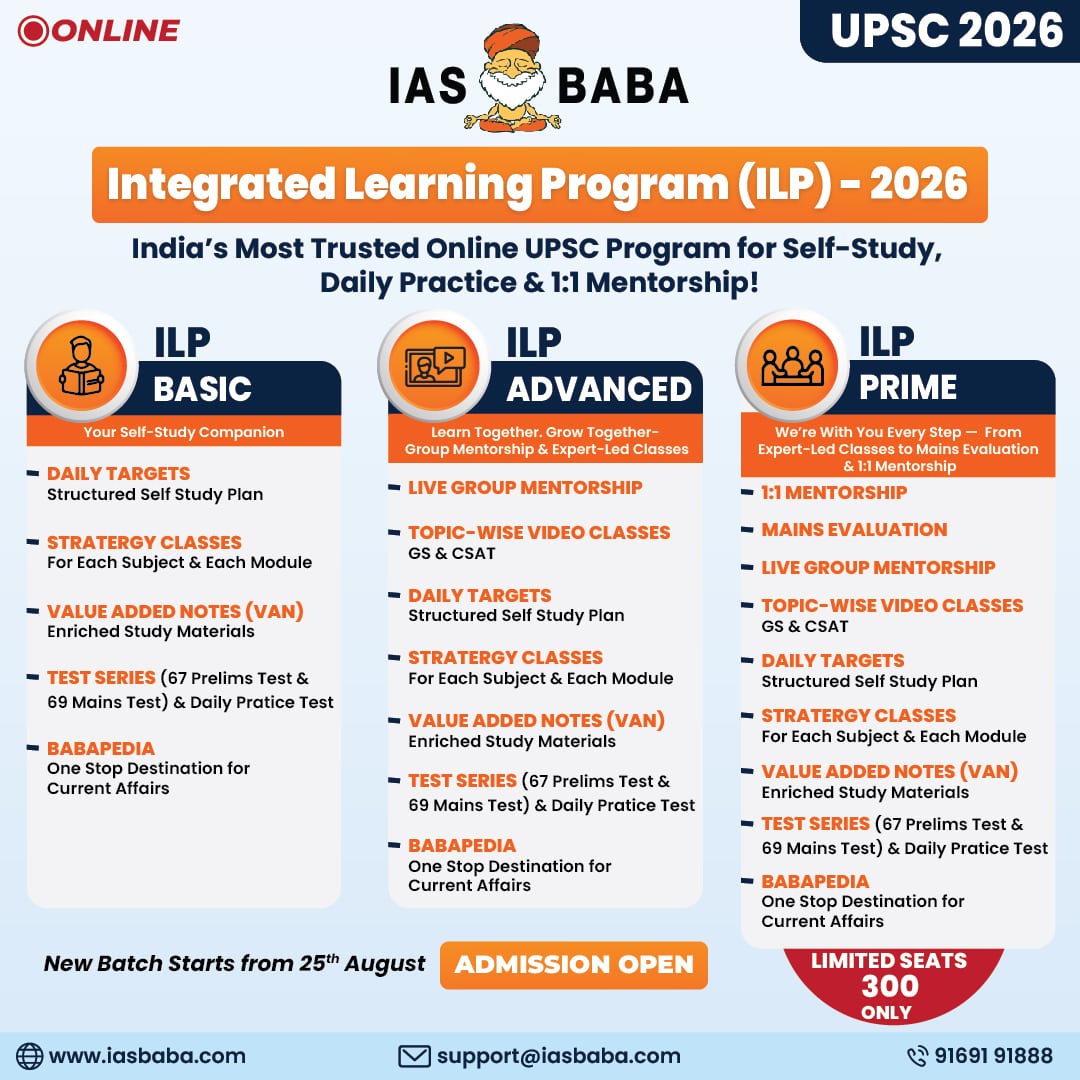IASbaba's Daily Current Affairs Analysis, IASbaba's Daily Current Affairs November 2015, National, UPSC
Archives
IASbaba’s Daily Current Affairs – 4th November, 2015
NATIONAL
TOPIC: General Studies 2
- Functions and responsibilities of the Union and the States, issues and challenges pertaining to the federal structure, devolution of powers and finances up to local levels and challenges therein.
An unfinished agenda of federalism
- Promoting both cooperative and competitive federalism has been an overarching theme of the present government.
- Political analyst K.C. Wheare, in his book Federal Government, defines “federalism” as “the method of dividing powers so that the general and regional governments are each within a sphere coordinate and independent”.
- This implies a system of governance in which sovereignty is constitutionally divided between a central governing authority and sub-national political entities.
Is India a federal country?
- Article 1 of the Constitution states, “India, that is Bharat, shall be a Union of States”.
- While the Constitution doesn’t mention the term “federal”, it does provide for a governance structure primarily federal in nature.
- It provides for separate governments at the Union and in the states.
- Further, it specifies and demarcates the powers, functions and jurisdictions of the two governments.
- Last, it details the legislative, administrative and financial relations between the Union and the states.
Schedule 7 and a unitary tilt to federalism in India:
- The distribution of legislative powers has been broken down clearly into three lists: the Union List, the State List and the Concurrent List.
- The Union List, comprising the “vital interests of the State”, is the longest, with 100 items. It includes defence, arms and ammunition, foreign affairs, foreign trade, atomic energy, treaties, war and peace, currency, and the Constitution.
- The State List (61 items) comprises, among others, public order, police, trade and commerce within the state, agriculture, land revenue and various taxes.
- The Concurrent List (52 items) includes preventive detention, contracts, economic and social planning, social security, education, labour welfare and electricity.
On the Union List, Parliament has exclusive powers to legislate. While the state has exclusive powers to legislate on the State List, in certain situations, Parliament can also do so.
As regards the Concurrent List, the issue is more complex. In case of a conflict between a state and a Central legislation, the parliamentary legislation shall prevail (Supreme Court, 2005).
This, coupled with the fact that residuary powers of legislation are vested in the Union, gives a “unitary” tilt to federalism in India.
Question on structure of Indian federalism:
A disconcerting trend has been observed since 1950. While the Union and Concurrent Lists have expanded, the State List seems to have shrunk.
Typically, two opposite forces seem to operate: One, cooperative federalism; and two, competitive federalism.
- Cooperative federalism implies the Centre and states share a horizontal relationship, where they “cooperate” in the larger public interest.
- It’s visualised as an important tool to enable states’ participation in the formulation and implementation of national policies.
- Competitive federalism can refer to the relationship between the Central and state governments (vertical) or between state governments (horizontal).
- This idea gained significance in India post the 1990s economic reforms.
- In a free-market economy, the endowments of states, available resource base and their comparative advantages all foster a spirit of competition.
- States need to compete among themselves and also with the Centre for benefits.
- Increasing globalisation, however, made the already existing inequalities and imbalances between states starker.
- This gave rise to concerns about states’ freedom to formulate their own growth policies.
Government efforts to promote co operative federalism:
- The acceptance of the 14th Finance Commission’s recommendations, apart from significantly enhanced devolution, enables states to design and implement programmes better suited to their needs.
- More importantly, the disbandment of the Planning Commission (PC) and its replacement by the NITI Aayog is specifically designed to promote cooperative federalism. NITI Aayog will concentrate on the broader policy framework instead of micro resource-allocated functions.
More ways to promote cooperative federalism:
- Reactivation of the Centre-State Council. Under Article 263, this council is expected to inquire and advise on disputes, discuss subjects common to all states and make recommendations for better policy coordination.
- While competition between states, reflected in the World Bank’s Ease of Doing Business index, has generated interest, this must be a continuing exercise. But states not doing well on the index complain of infirmities of process and procedure. These need to be made more acceptable and transparent.
- On issues like international treaties, WTO obligations, or the environment, how is the interest of affected states to be protected? An institutional mechanism must be evolved where important decisions are appropriately discussed with states. As India becomes globally more interdependent, these potential contentious issues must be resolved.
Way Forward:
- Cooperative and competitive federalism may be two sides of the same coin.
- Their complementarity is contingent on many affirmative steps.
- A considerable progress has been achieved by the present government in this regard, however much needs to be done.
Connecting the dots:
- Critically examine the importance of complementarity between cooperative and competitive federalism in India, to promote economic growth and development.
- Critically evaluate the various constitutional and statutory mechanisms to promote cooperative federalism in India.
- Competitive federalism is the panacea for growth and development of the country. Critically examine.
TOPIC: General Studies 2
- Structure, organization and functioning of the Judiciary and issues
Burdens the Supreme Court must shed
- The underlined theory of India’s Supreme Court being the most powerful court in the present democratic world is placed at the right height with execution of powers to the extent that, a Constitutional Amendment, if certified to trouble the basic structure of the Constitution is placed, can be easily dissolved by the Court.
- The inter-relationship that the legal sphere of the country shares with that of economic reforms or say, normal functioning and mechanisms at various level of administration, cannot be ignored and thus, have had profound implications on the judicial system.
Overarching way paved by trivial cases
- Civil disputes involving land, revenue, disciplinary proceedings against employees, interpretation of wills and other mundane subjects, which should have ended in courts below, have paved way and found out a way to keep re-appearing, overburdening the already burdened judiciary.
- The lower levels of courts need to be efficient to unburden the courts in the higher level of the hierarchy and therefore, not only merely setting up of these nyayalayas but systematic infrastructure and trained personnel (judges) are the need of the hour.
- Key bottlenecks that cause delays in civil and criminal proceedings
- Service of process;
- Adjournments;
- Interlocutory Orders;
- Appearance of witnesses and accused
- Article 136:
- This provision allows the losing party to approach the Supreme Court even without the mandatory certificate from the court that delivered the judgement leading to economic as well as time wastages unless it’s a complete travesty of justice
- Thus, many archaic laws should be done away with and appreciation or re-appreciation of evidence must come to a halt at some stage of the judicial proceedings and cannot percolate to the constitutional court
- Database for Accountability: There exists no database collecting statistics that are related to the pending cases and Judicial Statistics Bill, 2004, proposed legislations aimed at creating authorities at the national and state level to collect, in a scientific manner, statistics from each and every courtroom regarding the following:
- Hours taken by the Court to hear the dispute,
- Time between the filing of the case and hearing by the court,
- Adjournments granted,
- Time taken for delivery of judgment after it has been reserved, etc.
Passage of the bill could’ve contributed to the much needed efficiency and disposal of cases in a speedy manner.
- Judicial Infrastructure
- Lack of legal knowledge creates a void in the dissemination of justice making it a ‘crafted commodity’. Proper probation period and All India Judicial Services can be initiated to fill this gap.
- Increasing levels of corruption is demeaning the seat of justice due to lack of transparency and appointment of the judges post retirement. An appropriate Judicial Accountability and Judicial Appointments Bill would thus, go a long way in maintaining checks and balances
- Innovation and Adaptation is expected out of the litigation process transforming the role of the judge from merely deciding the case, to playing an active part in the manner of its resolution.
IASbaba’s Views (Key Reforms/Suggestions):
- Creation of Additional Judicial Manpower Planning Authority to clear backlogs and initiate swift disposal of new cases, eliminate delays and reduce cost.
- Target for the disposal level at the national level should be raised from 60% of the total case-load (at present) to 95% of the total case-load in five years
- Ensuring that not more than 5% of the cases pending before them should be more than 5 years old (5×5 rule) within the next three years
- Principles and procedures need to be adapted and calibrated to suit the ground realities of the Indian scenario.
- The growing gap between the rate of disposal and the rate of institution of proceedings should be taken into account while implementing effective strategies for proper case management.
- Timetables should be worked out and ICT should be employed effectively to monitor the progress
- Coordination with law-enforcement and other governmental authorities needs to be stepped up to avoid delays and unnecessary executive battles
Connecting the Dots:
- ‘The efficient judicial enforcement of contractual obligations as well as property rights is a pre-condition for generating confidence among domestic as well as foreign entrepreneurs and investors’. Critically analyse.
- Can alternative dispute resolution (ADR) methods be a ray of hope in the judicial maze that the Judiciary finds itself in? Discuss.
- Briefly explain the following w.r.t. the Indian scenario: “The justice that we are trying to secure should be “just and ready” as opposed to “rough and ready”.
MUST READ
Consumer interest in pharma is not served by excessive price control
Reform subsidies and redirect expenditure- Wasteful subsidies that do not reach the poor should be reduced. The savings would be better spent and might actually reach the poor, says the author in the second of two articles
States abusing law– Time to reform colonial-era sedition law to prevent misuse
Equality pays- A new report highlights that empowering women is smart economics
On the wrong foot- India must know it may be engendering resentments in Nepal that will remain long after the current crisis is over.
Towards an honourable exit for all- The recent Vienna meetings of regional powers with the U.S. and Russia have opened up a new diplomatic initiative in the Syrian conflict that has left the country broken
MIND MAPS
1. Shortage of Nurses-Business Standard
MIND MAPS – Download Here
2. Infrastructure Development- Live Mint
MIND MAPS – Download Here
3. Federalism- Indian Express
MIND MAPS – Download Here
4. Syria’s Future- The Hindu
MIND MAPS – Download Here












